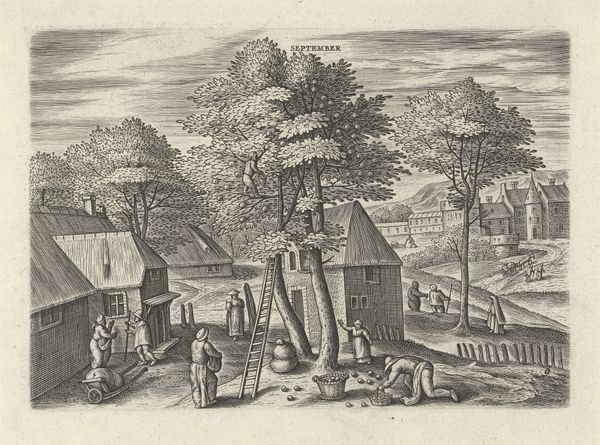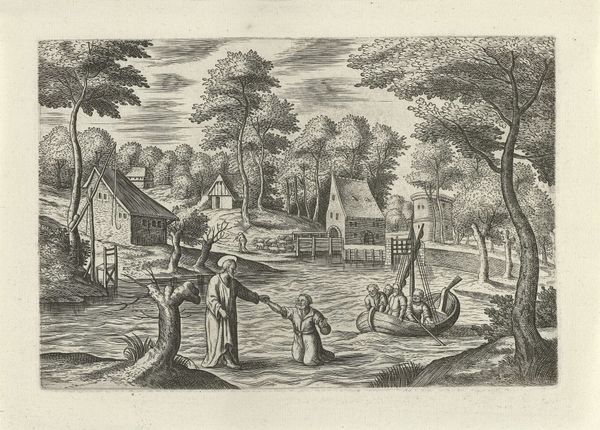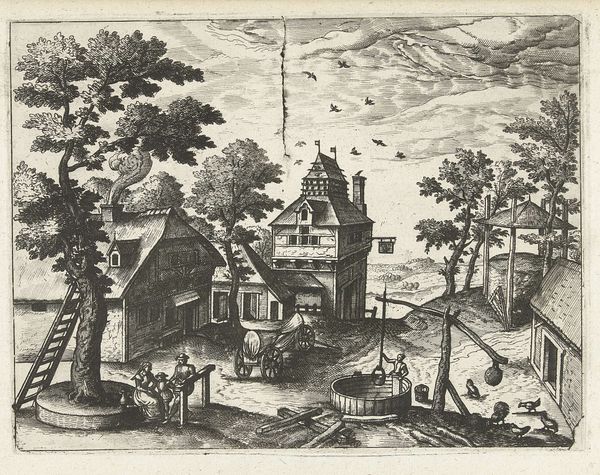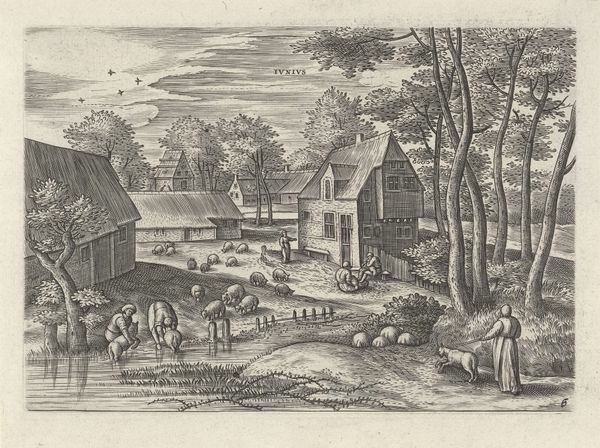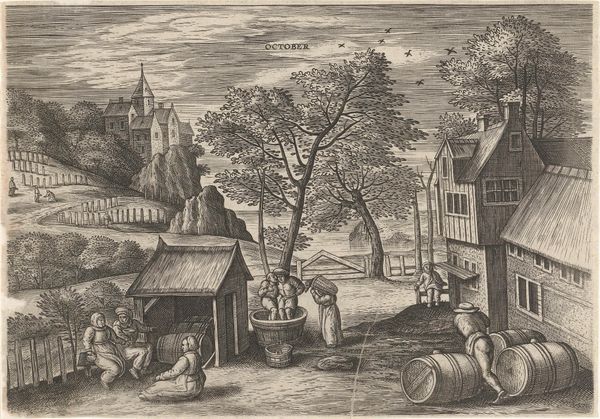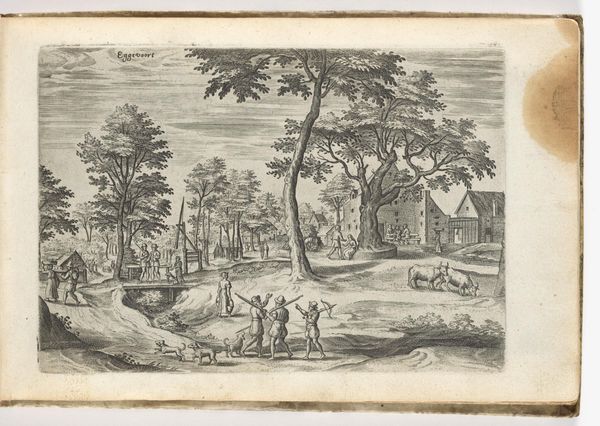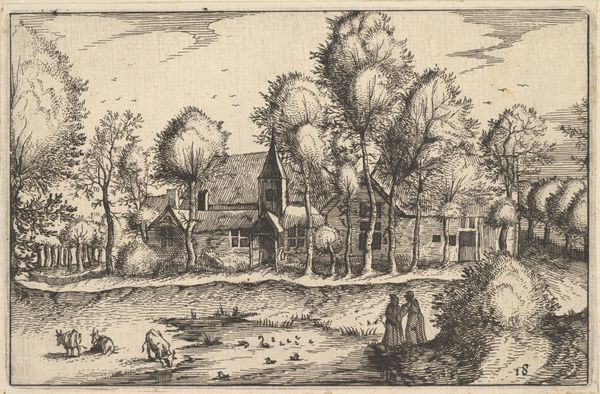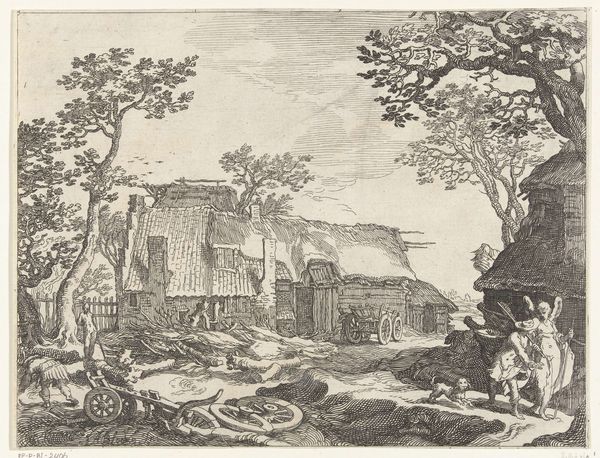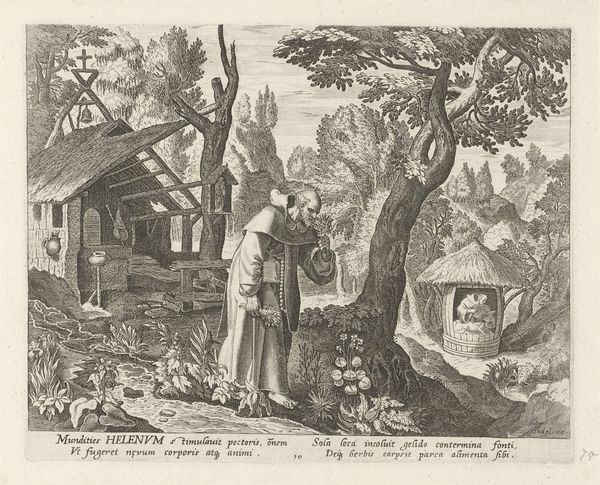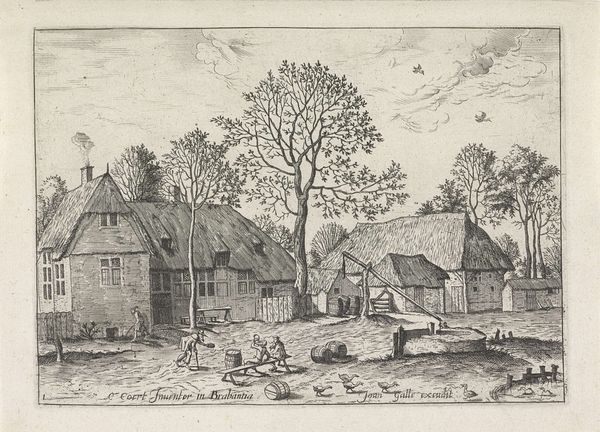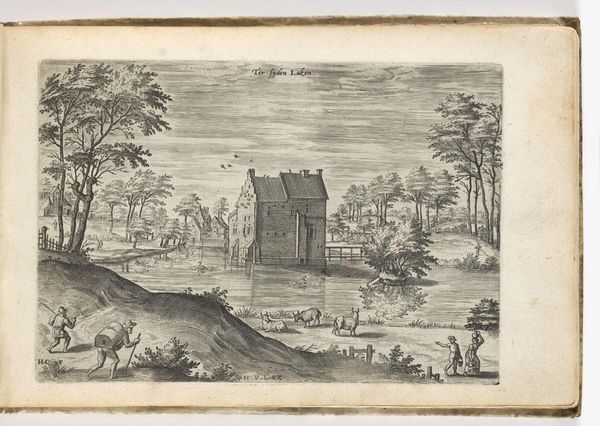
print, etching, intaglio, engraving
#
pen drawing
#
dutch-golden-age
# print
#
etching
#
intaglio
#
landscape
#
engraving
Dimensions: width 168 mm, height 128 mm
Copyright: Rijks Museum: Open Domain
Curator: The artwork before us, entitled “Juli,” dates back to somewhere between 1560 and 1595, attributed to Julius Goltzius. The rendering is achieved through engraving, etching and intaglio print methods. What is your initial take? Editor: I’m struck by the depiction of labor; there is a man lying down with his tools, next to others who are upstanding, next to the crops—it feels like a glimpse into the socio-economic realities of the period, with its stark contrast between leisurely figures and those clearly toiling. Curator: It's certainly illustrative of rural life in the Dutch Golden Age, even though Goltzius, born in Germany, was primarily active in Haarlem. The piece acts as a reflection of the agricultural landscape, reflecting the central economic driver of the society he occupied. What social elements jump out at you? Editor: The presence of the religious building. It seems quite centered in the image’s organization. Religion being used as the focal point of an agrarian-themed artwork feels to point toward the church and theology being deeply rooted in this kind of labor—perhaps something worth dismantling even today. Curator: Interesting. As an art historian, I observe how religious structures often appear in Dutch landscapes. They frequently symbolize the social order and the influence of the Church on everyday life, so it might be less pointed. Editor: The rendering of people feels very gendered. Are women bringing supplies? Is that part of a deliberate visual hierarchy? Curator: This aligns with the artistic conventions of the time, highlighting distinct roles, whether for documentary or idealistic purposes, and certainly not separate from those power dynamics. Editor: I appreciate your pointing out how artistic traditions mirror broader socio-political constructs; looking closer I notice birds dotting the skies in the distance too—what role do they play in our understanding of the work? Curator: Elements like birds and vegetation are integral to the era’s conventions for establishing a time or even mood in an engraving, imbuing it with an idea. This detail connects "Juli" with a rich tradition of seasonal landscapes that offered both social commentary and aesthetic enjoyment. Editor: That is to say, that even beyond its beauty there might have been social ideas to chew on. What a productive dialogue! Curator: Indeed, highlighting the crucial intersections between art, culture, and historical context deepens the artwork's layered understanding.
Comments
No comments
Be the first to comment and join the conversation on the ultimate creative platform.
